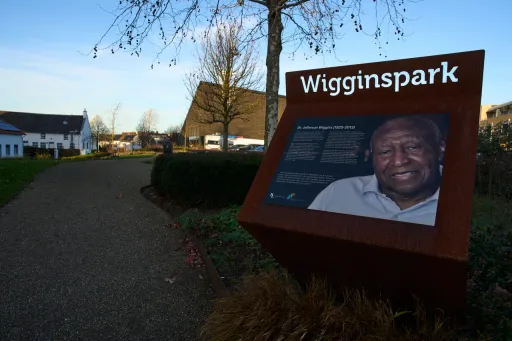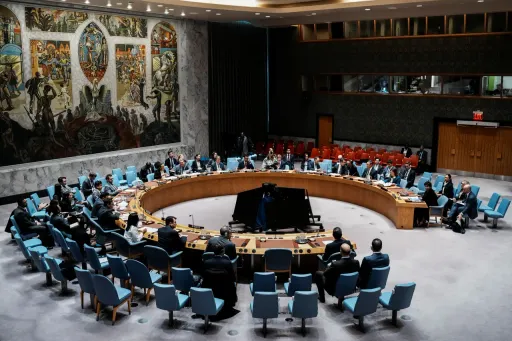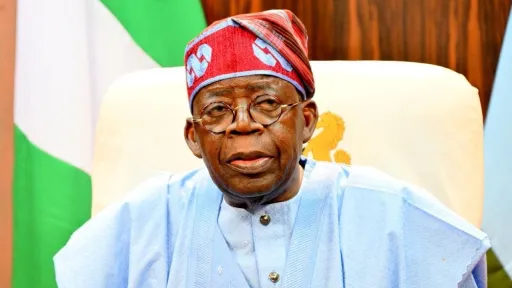By Pauline Odhiambo
Kenya, with its long history of producing Olympic champions in track and field, found an unlikely winner at the 2008 Games in Beijing.
Gerard Motondi, a sculptor and teacher, won the Olympic Torch Award that year in a fine arts competition organised by the International Olympic Committee on the sidelines of the Games.
Motondi's two-metre-tall artwork, "Inseparable", depicted a pair of fish entwined in an embrace, symbolising harmony as the abiding spirit of sport's greatest spectacle. The judges were wowed.
Sixteen years after he beat 10,000 other artists to the gold, the 2024 Paris Olympics saw Motondi's name suddenly trending again on social media in his native Kenya.
The reason? Three purportedly shoddy sculptures by other artists in honour of the country's champion athletes.
Master sculptor
As citizens outraged by the alleged abominations masquerading as sculptures vented their frustration across social media platforms, many of them tagged the 59-year-old Motondi, wondering why a master sculptor like him wasn't chosen for the project.
"The common refrain was: How can such a thing be allowed?" Motondi tells TRT Afrika. "But then, nobody from the government or the sports ministry reached out to me to make statues in honour of our athletes."
The three controversial sculptures had been unveiled before a ceremony to confer city status on Eldoret town, from which many of Kenya's top athletes hail.
Calling for the sculptures to be removed, many Kenyans posted side-by-side comparisons of statues in the US and other nations in honour of Kenyan athletes, and the caricatures in Eldoret.
After the statues were brought down, there was a fresh clamour for Motondi to be given the responsibility of sculpting replacements befitting the stature of the athletes being honoured.
Government officials have since reached out to the renowned sculptor to create artworks that will do justice to the greatness of the athletes the country seeks to immortalise in stone.
Stepping stones
Motondi was born at Tabaka in Kisii, the East African country's famous soapstone hub and one of its oldest traditional handcraft industries.
As a child, Motondi learned the craft of soapstone carving by making models of birds, fish and animals. Stone remains his preferred medium to this day.
"Stone is a natural material; it cannot pollute the environment and can last millions of years," he explains.
"Stone also doesn't have street value, which saves it from being vandalised, as is often the case with metal sculptures in public places. Also, it is resistant to climate change and cannot be ruined by fire," adds Motondi who was given a presidential commendation by Kenya's former president Mwai Kibaki in 2011.
In the mid-80s, Motondi was part of the first batch of teachers in the country to help introduce fine arts to children as part of the national curriculum. He remains a passionate teacher.
Changing narratives
In traditional Kisii culture, women were not allowed to carve soapstone. Their role was often limited to harvesting and transporting the stones.
Motondi is determined to change this narrative, overcoming cultural barriers by training several women in sculpting and ensuring inclusivity.
"Women make beautiful sculptures, and their designs sell well beyond the usual tourist markets," he tells TRT Afrika. "Sculpting by women has also boosted the incomes of many households."
In 2011, Motondi organised a cultural symposium called "African Stones Talk", where local women could showcase their skills and train with other experts in the field.
He has also trained mining workers by "combining the academic, cultural and business perspectives", becoming a catalyst in lowering mortality in the sector.
Beautifying cities
One of Motondi's marble sculptures, "On the Marks", stands at Citizen Square Park in Shenzhen city of China's Guangdong. Another, titled "Fair Play", grabs eyeballs at Kenyatta University's department of fine arts.
Over the years, he has sculpted about 25 artworks worldwide, including Türkiye, Russia, Canada, the US, India, South Korea, and the UAE. In Türkiye, Motondi’s "New Life" marble sculpture stands in Mersin metropolitan city in the country's southern region.
He was part of a team of artists invited to Dubai from different parts of the world to create marble sculptures in 2008 at the site where the tallest building in the world – Burj Khalifa – now stands.
"In all the countries I have worked in, sculptures celebrate the history, culture, and achievements of the people of those places," he says.
In 2013, he received a grant from the government of Kenya to create the Mashujaa sculpture in Nairobi's Uhuru Gardens, where the Kenyan flag was first raised in 1963 to signal the nation's independence from colonial rule.
Two years later, he created another artwork, "Love for the Nation, " which was installed at the same location.
"This sculpture depicts a mother's love and struggles, just like our freedom fighters devoted their lives to the nation," he tells TRT Afrika.
In 2022, the Kenyan government commissioned monuments to freedom fighters Dedan Kimathi and Mekatilili wa Menza. Both -sculptures, made from pink granite, stand at the National Museums of Kenya.
“My goal is to continue creating sculptures and monuments that can beautify cities all over the world," says Motondi. "I also hope to start an academy to continue training people interested in sculpting."
➤Click here to follow our WhatsApp channel for more stories.
























